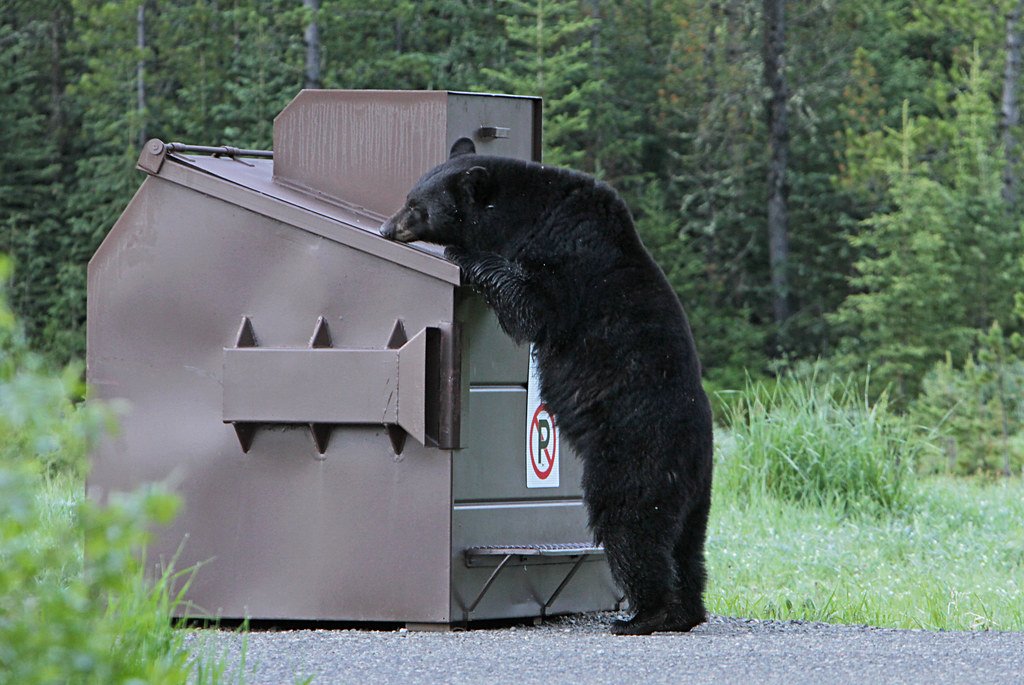Picture this: a massive humpback whale, roughly the size of a city bus, floating in the darkness of the deep ocean. It opens its mouth, but instead of feeding, it produces a hauntingly beautiful song that can travel hundreds of miles through the water. Now imagine that same whale having to compete with the thunderous roar of cargo ships, the constant hum of oil tankers, and the explosive blasts of seismic surveys.
This is the reality facing whales today. Our oceans have become dramatically noisier over the past several decades, forcing these magnificent marine mammals to sing louder just to be heard. What scientists are discovering is both fascinating and deeply concerning: whales are indeed turning up the volume, but they may not be able to keep pace with our increasingly noisy world.
The Science Behind Whale Songs

Whales produce some of the most complex and powerful sounds in the animal kingdom. Whales sing loud enough that their songs travel through the ocean, serving multiple crucial purposes in their underwater world.
These songs play a crucial role in communication among whales, potentially serving purposes from mating calls to establishing dominance among males. Think of whale songs as their version of social media, dating apps, and GPS navigation all rolled into one incredibly sophisticated acoustic system. Christopher Clark of Cornell University conducted using military data showed that whale noises travel for thousands of kilometres. As well as providing information about song production, the data allows researchers to follow the migratory path of whales throughout the “singing” (mating) season.
The sheer power of these vocalizations is staggering. Blue and fin whales are among the loudest animals in the oceans as well as the largest. Only males sing, humming about as loud as large ships. These underwater concerts can reach volumes that would be deafening on land, yet they’re essential for survival in the vast emptiness of the ocean.
The Lombard Effect in Marine Giants

When you’re trying to have a conversation at a noisy restaurant, you naturally raise your voice. Scientists call this the Lombard effect, and it turns out whales do exactly the same thing. Many animals increase the intensity of their vocalizations in increased noise. This response is known as the Lombard effect.
Recent research has provided compelling evidence of this phenomenon in whales. Humpback whale song units had a median SL of 173 dB re 1 μPa at 1 m, and SLs increased by 0.53 dB/1 dB increase in background NLs. These changes occurred in real time on hourly and daily time scales. This means whales can adjust their vocal output almost immediately when their environment becomes noisier.
However, this compensation comes with limits. Orcas and humpbacks seem to compensate fully for increasing noise – the intensity of their calls grows in lockstep with ambient noise levels. The calls of minke whales, on the other hand, increased only marginally in the presence of loud noise. Some whale species are simply reaching their vocal limits.
Ocean Noise Pollution Has Exploded

Our oceans aren’t naturally silent, but they’ve never been this loud. However, ocean conditions have changed a lot from the pre-industrial era in which whales evolved. Ambient noise levels in the ocean have increased by more than 20 decibels since 1950 – this represents a 100-fold increase in the background noise intensity. To put this in perspective, this is like turning up the volume on your stereo from level 2 to level 200.
In the Pacific Ocean alone, shipping noise has doubled every decade over the last 40 years. For iconic blue whales, a dramatic rise in ocean noise has drastically reduced their ability to interact with one another, decreasing the distance they can communicate over by as much as 90 percent. Imagine if your cell phone’s range suddenly dropped from covering your entire city to just your neighborhood.
The sources of this underwater cacophony are numerous and growing. tens of thousands of commercial tankers and container ships are on the seas at any given time. And in the Canadian Arctic alone, the distance travelled by ships has nearly tripled over the past 25 years. Each of these massive vessels creates a constant rumble that can travel for miles underwater.
Shipping Traffic Creates Underwater Highways of Noise

Commercial shipping represents the single largest contributor to ocean noise pollution. These maritime highways crisscross every major body of water on Earth, creating what marine biologists describe as an underwater equivalent of living next to a busy freeway. Propeller cavitation from shipping, sonar from navy vessels in search of new oil and gas sources, and construction noise as new infrastructure is built all emit sounds that penetrate deep into the ocean, increasing underwater noise pollution.
The frequency ranges of ship noise overlap almost perfectly with whale communication frequencies, creating a particularly problematic situation. As loud as whales’ songs are, modelling suggests that humpbacks and related species can’t produce sounds louder than the shipping industry, Elemans said. “They’re really affected by (shipping noise) and it significantly reduces their ability to communicate,” he said. Ships essentially create acoustic barriers that whales cannot overcome.
The scale of this problem becomes clearer when you consider shipping patterns. Almost all of the world’s shipping is conducted traversing the oceans. That’s not just by volume either, where it accounts for approximately 80%, but also in terms of value, with around 60% carried by boat. This means noise pollution follows the same routes whales use for migration, feeding, and breeding.
Military and Industrial Activities Add to the Din

Beyond commercial shipping, military operations and industrial activities contribute significant noise to marine environments. Seismic air guns are used during oil and gas exploration to determine what’s beneath the ocean floor. The sounds the air guns emit are intense – louder than a jet at take-off, which would rupture your ear drum – and are at frequencies similar to cetaceans’ communication signals.
These industrial sounds are not just loud; they’re often sudden and unpredictable, making them particularly disruptive to marine life. Military sonar systems, underwater construction projects, and offshore drilling operations all add layers to an increasingly complex acoustic environment. Industrial underwater noise significantly alters the behavior of marine mammals, especially whales, affecting their hearing, causing stress, disrupting feeding, hindering mother-calf communication, and frightening off fish, their main prey.
The cumulative effect of all these noise sources creates what scientists call “acoustic smog.” Just as air pollution can make it hard to breathe, acoustic smog makes it increasingly difficult for whales to “hear” their underwater world clearly.
Whales Struggle to Adapt to Human-Made Sounds

Here’s where the story takes an interesting twist: whales don’t respond the same way to all types of noise. A new study has found humpback whales sing louder when the wind is noisy, but don’t have the same reaction to boat engines. Humpback whales evolved over millions of years with noise from natural sources but noise from human-made vessels is foreign to their instincts.
This selective response reveals something profound about whale evolution and behavior. Natural sounds like wind, waves, and rain have been part of the ocean soundscape for millions of years. Whales have evolved sophisticated strategies to deal with these predictable noise sources. However, the mechanical drone of ship engines, the explosive blasts of seismic surveys, and the electronic pings of sonar systems are entirely alien to their acoustic world.
Since the industrial revolution, the amount and rapid change in ocean sounds is far faster than any large, slow, reproducing animal could keep up with on an evolutionary time scale. Whales cannot evolve fast enough to adjust their calling behavior to contend with anthropogenic noise. Evolution works over thousands of generations, but we’ve changed the ocean’s acoustic environment in just a few decades.
Communication Ranges Are Shrinking Dramatically

The practical impact of ocean noise on whale communication is staggering. Research reveals that whales’ ability to communicate over long distances has been severely compromised. Helble and his colleagues estimate that minke whales calling in a relatively low-noise environment could be heard by others as far as 114 kilometers away; as noise levels increased, that range dropped to just 19 kilometers, they report this month in The Journal of the Acoustical Society of America. “It’s an order of magnitude change in communication range,” Guazzo says.
Imagine if your cell phone’s coverage suddenly shrank from reaching the next city to barely covering your neighborhood. For whales, this reduction in communication range affects every aspect of their lives. By analyzing more than 42,000 minke whale boings, scientists have found that, as background noise intensifies, the whales are losing their ability to communicate over long distances. This could limit their ability to find mates and engage in important social contact with other whales.
The consequences extend far beyond simple communication difficulties. When whales can’t effectively communicate across the distances they’re accustomed to, it disrupts migration patterns, feeding coordination, and breeding behaviors that have evolved over millions of years.
Impact on Feeding, Mating, and Migration

Whales depend on sound for virtually every aspect of survival. Whales depend on sound to navigate, find food, and communicate, making them exceptionally sensitive to changes in their acoustic habitat. When noise pollution interferes with these fundamental behaviors, the effects ripple through entire whale populations.
Feeding becomes dramatically more challenging in noisy environments. Ships produce underwater noise that makes it harder for the whales to find food and communicate by interfering with echolocation, the clicking noise that orcas make, which travels through the water and bounces back when it hits something. “Scientists suggest that southern residents can lose several hours of hunting a day because of vessel noise and attempts to avoid vessels,” Aronson explains. For animals that need to consume massive amounts of food to survive, losing even a few hours of hunting time each day can have serious consequences.
Mating and social bonding also suffer in noisy oceans. Because some whales sing as a mating call, the shipping industry’s interruption of those songs is potentially worrying, said Michael Noad, director of the Centre for Marine Science at the University of Queensland in Australia. “For whale populations that are really dispersed, like the Antarctic blue whales, they might not be able to find mates in a noisy ocean environment,” he said. When whales can’t find each other to mate, population recovery becomes even more challenging for already endangered species.
Solutions and Conservation Efforts

The good news is that ocean noise pollution is one environmental problem we can actually turn off. Unlike plastic pollution or chemical contamination, noise disappears the moment we stop making it. Research suggests that reducing ship speeds by just 10% could potentially reduce ocean noise pollution from shipping by around 40%, reduce the risk of ships colliding with whales by about 50%, and lower greenhouse gas emissions from shipping by 13%.
Some regions are already implementing innovative solutions. The 2023-2024 season had a 71 percent participation, leading to a 50 percent reduction in noise. “The slowdown created 72 more minutes a day of time under 110dB, which has been recently identified as a ceiling for foraging success,” says Aronson. This demonstrates that simple operational changes can have immediate positive effects.
International cooperation is gaining momentum. At UNOC, a coalition from 37 countries launched an effort to reduce underwater noise pollution that harms marine biodiversity and ecosystems. Global leaders have launched the High Ambition Coalition for a Quiet Ocean to protect marine life. This growing recognition at the highest levels of government suggests that meaningful action may finally be on the horizon.
The Future of Whales in Our Noisy Oceans

The question isn’t whether – the scientific evidence clearly shows they are. The real question is whether they can adapt quickly enough to survive in our increasingly noisy world. Our model showed distinct and concerning changes in migration behavior, depending on which noise impact has the biggest influence on whale decision making. Migration might simply be slower or, if the noise is especially severe, migration may fail, with the whales drifting off-course due to strong currents and a lack of information on which direction to travel.
Some whale populations may be reaching critical thresholds. When background noise rose above 85db, it appears that the whales stopped calling altogether. This could impair the whales’ ability to communicate, and with it the health of the Minke whale populations. When whales simply give up trying to communicate, we’ve moved beyond adaptation into a zone of potential population collapse.
Yet there’s reason for cautious optimism. New technologies are emerging to monitor whale communications and shipping traffic simultaneously. The bet is that the same hair-thin strands that carry internet signals can be transformed into a continuous underwater microphone to capture the clicks, calls and whistles of passing whales – information that could reveal how they respond to ship traffic, food scarcity and climate change. If the experiment works, the thousands of miles of fiber-optic cables that already crisscross the ocean floor could be turned into a vast listening network that could inform conservation efforts worldwide.
The evidence is clear: because they have no choice. Our oceans have become a cacophonous underwater metropolis where these ancient mariners struggle to make themselves heard above the din of human activity. While whales are remarkably adaptable creatures, they’re bumping up against the limits of their vocal abilities. The sounds they’ve relied on for millions of years to find food, mates, and navigate vast oceanic distances are being drowned out by cargo ships, oil tankers, and industrial operations.
Yet this story doesn’t have to end in tragedy. Unlike many environmental problems, ocean noise pollution has relatively simple solutions. Slower ships mean quieter oceans. Better shipping routes can avoid critical whale habitats. International cooperation is already showing promising results in some regions.
The whales are doing their part – they’re adapting, calling louder, and working harder to communicate in our noisy world. Now it’s our turn to do something about the racket we’re making in their home. What do you think about the future of these remarkable singers of the sea? Tell us in the comments.

Hi, I’m Andrew, and I come from India. Experienced content specialist with a passion for writing. My forte includes health and wellness, Travel, Animals, and Nature. A nature nomad, I am obsessed with mountains and love high-altitude trekking. I have been on several Himalayan treks in India including the Everest Base Camp in Nepal, a profound experience.




